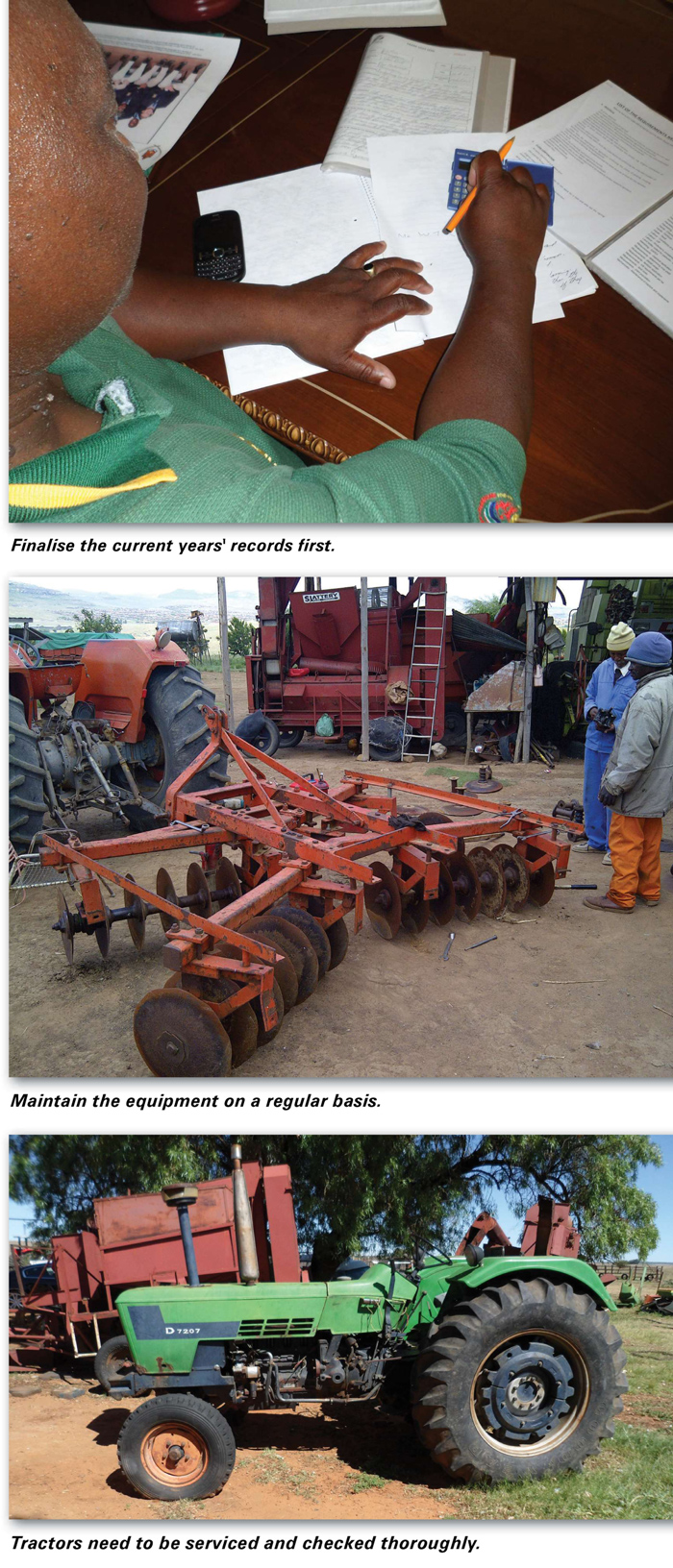August 2019
| Jenny Mathews, Pula Imvula contributor. Send an email to jenjonmat@gmail.com |  |
The harvest has ended…but our work is not yet done! Every project has a cycle and the same holds for our on-farm seasonal activities. When you set out at the start of the season to plant a field of grain for food and/or profit, you actually embarked on a new project.
The project management process for the 2018/2019 season is not complete until every last activity can be ticked off as done, and a post-harvest monitoring and evaluation has been conducted. In fact, no farmer should begin a new season without doing a thorough evaluation of the last project. It is one thing to make a plan; but quite another thing to put it into operation and make sure it works. Control over your farming enterprise is essential and post-harvest assessment and measurement helps you to check if progress is being made or if you need to make adjustments.
This ‘control’ is managed through key processes such as practical maintenance of your tools and resources, record keeping of every aspect of the enterprise and analysis and correction where necessary to ensure the sustainability of the business.
 IMPORTANT POST-HARVEST ACTIVITIES FOR FARMERS
IMPORTANT POST-HARVEST ACTIVITIES FOR FARMERS
Grain marketing and storage
The work does not end on the day the last of the maize has been harvested, in many ways that is when the business side of the project begins. A farmer must assess the yield and make decisions about the marketing and storage of the harvest. Do you know that one of the most serious yield losses are incurred in developing countries due to post-harvest losses?
Although maize can be stored for a considerable period in an unprocessed form without deteriorating, it must be kept safe from rodents and pests and it must be protected from moisture. Mould occurs if the grain was not dry enough at harvesting or if it is exposed to high humidity or moisture due to poor storage management. Fungal infection will cause rot and the development of aflatoxins which are poisonous to livestock and can even cause serious health issues for humans. The risks of home storage need to be measured against the costs of storing the maize at a silo where the grain is kept safe for you.
Field management
Visit your fields. Are you going to have livestock grazing on the material left on the land or are you going to use that material to build up the health status of your soil? If you are not going to utilise the maize stover there is a risk that wind will blow the valuable organic material away, so you should consider disking it in, so it is not wasted. Also assess the soil health using the strategies you have learned including moisture levels, soil sampling and weed bank assessment. Decide what the next processes on the field will be and how best you will manage the field.
Maintenance – safe storage of tools
Take time to store or service all the equipment you have used during the harvesting process. The tractors will need to be serviced and cleaned. Your harvesting equipment needs to be cleaned, greased and stored carefully until you next need them. It is ideal to already embark on a post-harvest maintenance programme since the problems you experienced will still be fresh in your mind and you can attend to the weak areas. Keep a record of your maintenance programme so you always know exactly when last your vehicles and implements were serviced.
Analysis – lessons learned
Because farming is tied to the movement of the seasons, project management is challenging. It is quite normal for a farmer to still be tying up the ends of one season while he is already initiating the activities of the next season.
The crop has not yet been sold off and he is worrying about financing next season’s inputs, preparing the fields and ordering inputs for the next cycle. It is very easy to be swept along into new season activities and then neglect the CRITICAL process of ANALYSIS AND ASSESSMENT after each cycle. This is asking for trouble and could lead a farmer into a debt trap.
Records are kept for three main reasons:
Good farm records should have:
WHAT SHOULD WE RECORD?
The true measure of the value of any business leader and management is performance!
If you equip yourself with detailed information about your farming activities, you are empowered to make the wisest decisions going forward. Do yourself a favour and take a project management approach to your farming operations – no matter how large or small they might be. It has been said knowledge is more valuable than money – knowledge can never be taken away from you – knowledge is power!
Publication: August 2019
Section: Pula/Imvula